Is Nanxun Ancient Town the Most Underrated Destination in China? Find Out!
An Essential Guide to Visiting Nanxun Ancient Town
Nestled in the tranquil embrace of water and history, Nanxun Ancient Town stands out as a jewel among China’s famed waterways. Unlike its more commercialized counterparts, such as Wuzhen and Zhouzhuang, Nanxun offers an authentic glimpse into the serene life of a bygone era, where arched bridges and cobblestone paths whisper tales from over 1,400 years of history. Here, you can wander through narrow lanes, marvel at well-preserved ancient residences, and witness the daily rhythms of local life, all while savoring the unique blend of traditional Chinese architecture and European influences.
This guide aims to illuminate the wonders of Nanxun, providing you with essential insights and recommendations for your visit. From must-see attractions like the Little Lotus Garden and the “100 Houses Complex,” to cultural experiences such as Chinese brush-making and block printing, we will help you navigate this peaceful water town. Whether you’re looking to indulge in its rich heritage or simply find a picturesque spot to unwind, Nanxun promises an unforgettable escape. So, let’s embark on this journey together and discover the hidden treasures of Nanxun Ancient Town!
In This Guide
- An Essential Guide to Visiting Nanxun Ancient Town
- The Rich History and Legends of Nanxun Ancient Town
- Main Highlights: What You Absolutely Can’t Miss
- Planning Your Visit: A Practical Guide
- Tickets: Prices, Booking, and Tips
- How to Get There: A Complete Transportation Guide
- Local Cuisine and Accommodation Nearby
- Frequently Asked Questions
- Final Thoughts on Your Trip
The Rich History and Legends of Nanxun Ancient Town
A Tapestry of Time: The History of Nanxun Ancient Town
Nestled in the serene embrace of Zhejiang province, Nanxun Ancient Town whispers tales of its illustrious past through its canals, bridges, and traditional architecture. With a history stretching back over 1,400 years, this tranquil water town is a living museum, showcasing the evolution of Chinese culture and commerce.
The Rise of Silk: Southern Song Dynasty
Nanxun began to flourish during the Southern Song Dynasty (1127–1279), primarily due to its burgeoning silk industry. The town’s strategic location along key trade routes facilitated the growth of silk production, making it a vital economic hub. Wealthy merchants built opulent houses, and the town’s canals became bustling arteries of trade, transporting silk and other goods to far-off markets. This period laid the groundwork for Nanxun’s prosperity and cultural richness.
Ming Dynasty: A Commercial Center
The Ming Dynasty (1368–1644) marked another significant chapter in Nanxun’s history, as the town solidified its reputation as a critical commercial center. With the influx of wealth, the architecture evolved, reflecting a harmonious blend of traditional Chinese and European styles. This period saw the construction of notable landmarks, including the famous “100 Houses Complex,” known as Baijianlou, which remains a testament to Nanxun’s architectural ingenuity.
Legends and Lore: The Heart of Nanxun
Nanxun is not just defined by its historical significance; it is also steeped in captivating legends that add a mystical charm to the town. One such tale revolves around Liu Yong, the wealthiest man in Nanxun during the 18th century. Legend has it that he was so enamored with the beauty of lotus flowers that he constructed the Little Lotus Garden (小莲庄) to host lavish gatherings for poets and artists. Today, visitors can stroll through this enchanting garden, which still reflects Liu’s love for nature and art.
Another popular legend tells of a local fisherman who discovered a beautiful jade pendant while casting his net in the waters of Nanxun. Believed to bring prosperity and happiness, the pendant became a symbol of luck for the town’s residents. Today, many still visit the riverside to cast their wishes into the water, hoping to catch their own piece of fortune.
The Modern Era: Preserving Heritage
Despite the rapid modernization sweeping through China, Nanxun has managed to retain its authentic charm and cultural heritage. Recognized for its less commercialized atmosphere compared to other nearby water towns like Wuzhen and Zhouzhuang, Nanxun offers a peaceful retreat for travelers seeking an unfiltered glimpse into traditional Chinese life. The town’s ancient buildings and local customs are preserved, allowing visitors to experience the genuine warmth and hospitality of its residents.
Conclusion: A Journey Through Time
Visiting Nanxun Ancient Town is akin to stepping into a living painting, where every corner reveals a story waiting to be told. With its rich history, enchanting legends, and stunning landscapes, Nanxun invites travelers from around the globe to wander its quiet streets, soak in its serene ambiance, and become part of its timeless narrative. Whether you are drawn by the silk trade’s legacy, the tales of legendary figures, or simply the beauty of a traditional water town, Nanxun promises an unforgettable experience that transcends time.
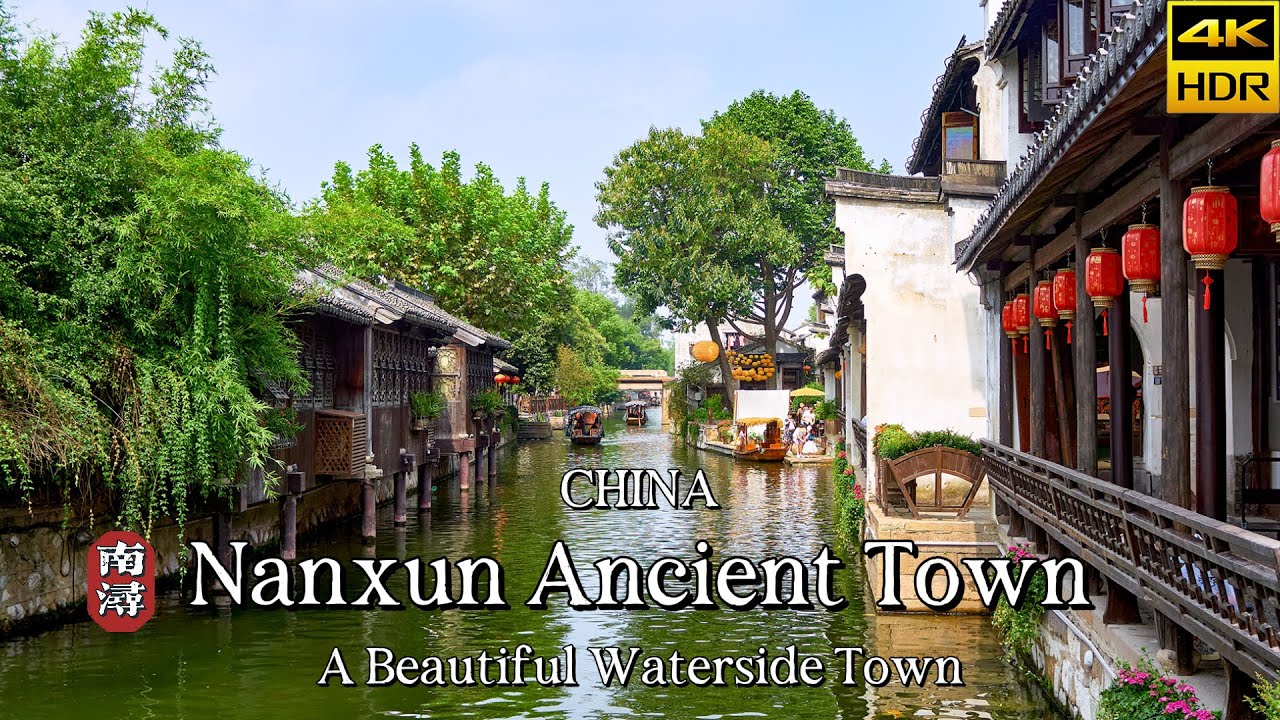
Nanxun Ancient Town.
Main Highlights: What You Absolutely Can’t Miss
Little Lotus Garden
Step into a serene enclave at Little Lotus Garden, a private garden once owned by Liu Yong, the wealthiest man in Nanxun. This enchanting space is a harmonious blend of lush greenery, tranquil ponds, and delicate lotus blossoms, especially vibrant in the summer months. As you stroll through the pathways, take a moment to admire the rockery and traditional pavilions that add to the garden’s charm. Don’t miss the chance to participate in a brush-making workshop here, where you can craft your own Chinese writing brush. It’s a splendid way to connect with the culture while surrounded by beauty.
Tip: Aim to visit in the morning when the light dances on the water and the flowers are in full bloom.
Baijianlou (100 Houses Complex)
Marvel at the architectural grandeur of Baijianlou, or the “100 Houses Complex.” This impressive row of ancient buildings, lining the canal for over 400 meters, showcases the authentic residential lifestyle of Nanxun’s past. Constructed 400 years ago, the complex remains untouched by modern renovations, allowing you to wander through history as you observe the daily lives of local residents. The allure of these well-preserved structures, coupled with their rustic charm, provides an intimate glimpse into the town’s heritage.
Tip: Bring your camera! The juxtaposition of ancient architecture against the serene canal creates perfect photo opportunities.
Liu’s Family Compound
Step into a fusion of Eastern and Western architectural styles at Liu’s Family Compound. Renowned for its unique blend of classic Chinese design with European elements, this historic residence features a grand portico and intricate stained glass windows. While exploring the compound, you’ll have the opportunity to engage in traditional Chinese block printing, a fascinating technique that dates back centuries. It’s not only a cultural experience but also a chance to create a unique souvenir by printing your name in Chinese characters.
Tip: Allocate some time to fully enjoy the block printing session; it’s a delightful way to immerse yourself in the local artistry.
Zhangshiming’s Former Residence
A visit to Zhangshiming’s Former Residence is a must for history enthusiasts. Known as one of the top private residences in Jiangnan, this impressive building offers insights into the lives of the wealthy during the Ming and Qing dynasties. The architecture reflects the prosperity of the era, adorned with exquisite carvings and traditional furnishings. As you explore the residence, be sure to absorb the stories and anecdotes shared by the guides, which breathe life into the historical significance of this landmark.
Tip: Look for the intricate details in the woodwork and architecture; they tell stories of craftsmanship from centuries ago.
Huzhou Nanxun Old Bridge
Cross the charming Huzhou Nanxun Old Bridge, an architectural gem that dates back several hundred years. This picturesque bridge not only serves as a functional crossing over the canal but also offers stunning views of the surrounding landscapes. As you stand on the bridge, take in the reflections in the water and the quaint scenes of daily life unfolding below. It’s the perfect spot for a quiet moment or a lovely photograph.
Tip: Visit during sunset for a magical view, as the colors reflect beautifully on the water, creating a serene and picturesque atmosphere.
The Silk Industry Guild Hall
Dive into Nanxun’s rich heritage at the Silk Industry Guild Hall, where you can learn about the town’s historical significance in the silk trade. This hall showcases the craftsmanship and artistry involved in silk production, an industry that flourished during the Southern Song Dynasty. Engage with interactive exhibits that illustrate the silk-making process, and don’t miss the chance to purchase high-quality silk products as a unique keepsake from your journey.
Tip: Try to catch a live demonstration if available, as it provides a deeper understanding of the techniques involved in this ancient craft.
Guanghui Bridge
Another beautiful spot is the Guanghui Bridge, known for its stunning architecture and scenic views. This bridge, with its elegant arches and ancient stones, is a great place to pause and soak in the surroundings. The atmosphere here is tranquil, making it an ideal location for reflection or simply enjoying the beauty of Nanxun’s waterways.
Tip: Visit early in the morning or late afternoon when the sunlight casts a warm glow, enhancing the colors of the bridge and its reflections in the water.
Conclusion
Nanxun Ancient Town is a treasure trove of history, culture, and stunning scenery. Each of these highlights offers a unique glimpse into the town’s rich heritage and charm. Whether you’re capturing moments through your lens or creating art with your hands, Nanxun promises an unforgettable experience that invites you to slow down and savor the essence of traditional Chinese life.
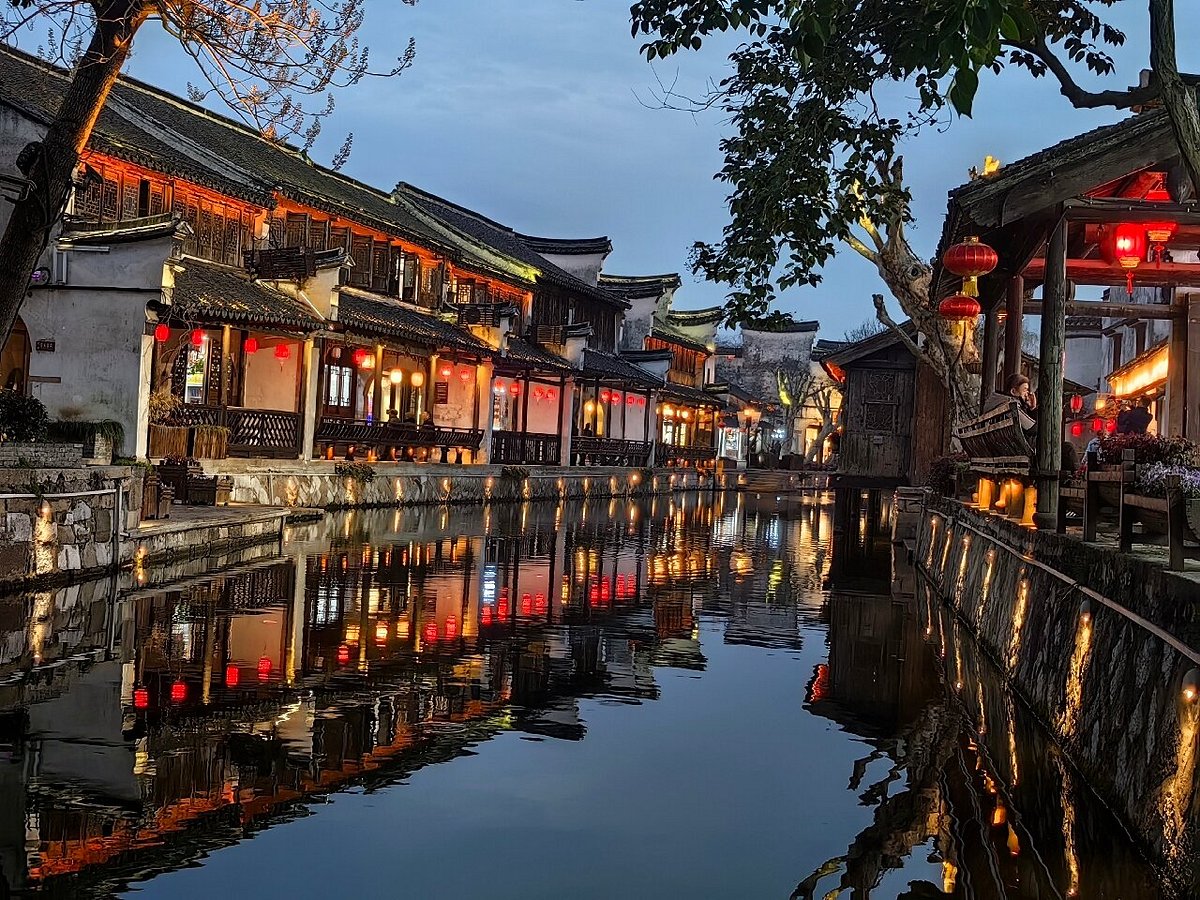
Nanxun Ancient Town.
Planning Your Visit: A Practical Guide
Best Time to Visit
The ideal time to explore Nanxun Ancient Town is during spring (March to May) and autumn (September to November). These seasons bring mild temperatures, vibrant surroundings, and beautiful natural scenery. Summer can be hot and humid, while winter may be too chilly for outdoor exploration. If you prefer a quieter experience, consider visiting on weekdays to avoid the weekend crowds.
Recommended Itinerary
Day 1: Arrival and Exploration
- Morning: Arrive in Nanxun. Start your day with a leisurely stroll along the picturesque canals and bridges. Head to the Little Lotus Garden to admire the beautiful lotus flowers and learn about Chinese writing brush making.
- Lunch: Enjoy a meal at a local restaurant. Try the authentic Zhejiang cuisine, including fresh river fish and local dumplings.
- Afternoon: Visit Baijianlou, the “100 Houses Complex,” to see well-preserved traditional residential buildings. Then, explore Liu’s Family Compound and participate in a block printing workshop.
- Evening: Conclude your day with a sunset walk along the canals, followed by dinner at a charming riverside café.
Day 2: Cultural Immersion
- Morning: Visit Zhangshiming’s Former Residence to delve into Nanxun’s history and admire the blend of Chinese and Western architectural styles.
- Lunch: Sample street food from local vendors for an authentic taste of Nanxun.
- Afternoon: Take a boat ride along the canals for a unique perspective of the town. Spend the rest of your afternoon exploring the narrow lanes and quaint shops.
- Evening: Wrap up your visit with a traditional tea ceremony to immerse yourself in the local culture.
Photography Tips
- Golden Hour: For the best lighting, visit during early morning or late afternoon when the sun casts a warm glow over the ancient buildings and canals.
- Focus on Details: Capture the intricate architectural details of the historic homes and bridges. Close-up shots of traditional features can tell a compelling story.
- Reflections and Water: Utilize the canals to create stunning reflection shots. Early morning often provides calm waters that mirror the beauty around.
- Candid Moments: Capture the daily life of the locals, from tea sipping to traditional crafts, to add authenticity to your photos.
- Wide Angles: Use a wide-angle lens to capture the expansive views of the town and its waterways, showcasing the harmony of nature and architecture.
What to Wear
Comfortable footwear is essential, as you will be walking along cobblestone paths and narrow lanes. Dress in breathable layers, especially in warmer months. A light jacket or sweater may be needed during evening strolls. If you plan on exploring gardens or spending time near the water, consider wearing a hat and applying sunscreen to protect yourself from the sun.
Insider Tips
- Local Treats: Don’t miss trying the local snacks, especially the rice dumplings and stir-fried river shrimp. They are a must for any food lover!
- Cultural Experiences: Seek out workshops on traditional crafts, such as brush making or block printing, for a hands-on cultural experience that will enrich your visit.
- Stay Overnight: If time allows, consider an overnight stay in a local guesthouse. This will give you the chance to experience the town’s tranquil atmosphere after day-trippers leave.
- Explore Beyond the Main Attractions: Venture into the lesser-known alleys and corners of Nanxun to discover hidden gems and interact with locals for a more authentic experience.
- Plan for Rain: If visiting during the rainy season, bring an umbrella and waterproof shoes, as the town’s charm shines even when the weather is less than perfect.
With this practical guide in hand, you’re all set to enjoy the tranquility and authenticity of Nanxun Ancient Town. Embrace the culture, take in the sights, and create lasting memories in this enchanting water town!
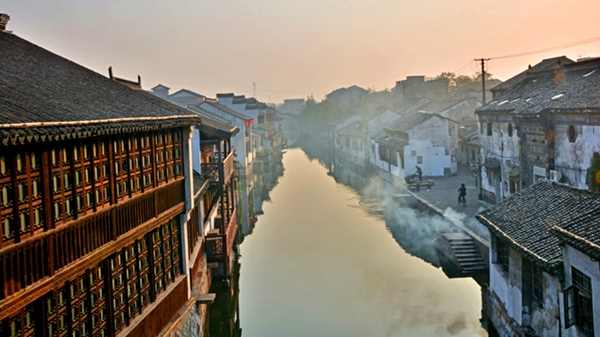
Nanxun Ancient Town.
Tickets: Prices, Booking, and Tips
Visiting the enchanting Nanxun Ancient Town is a journey into a tranquil world steeped in history and culture. To make the most of your experience, purchasing your tickets in advance is highly recommended, especially during peak travel seasons. Below is a detailed overview of ticket options, pricing, and booking tips to help you plan your visit seamlessly.
| Ticket Type | Price (CNY) | Includes |
|---|---|---|
| Adult Admission | 100 | Access to the ancient town and attractions |
| Child Admission | 50 | Access for children (ages 6-18) |
| Senior Admission | 50 | Discounted access for seniors (over 60) |
| Family Package | 250 | Includes two adults and two children |
How to Book Your Tickets
Booking your tickets for Nanxun Ancient Town can be done easily through various platforms, including:
- Official Website: The town has an official website where you can purchase tickets directly.
- Travel Agencies: Many local and international travel agencies offer ticket booking services that may include guided tours.
- Tour Operators: Consider booking a private tour that includes transportation and a guided experience in Nanxun, which often comes with bundled ticket prices.
Tips for Booking
- Book in Advance: It’s advisable to book your tickets at least a week ahead of your visit, especially if you are traveling during holidays or weekends when visitor numbers surge.
- Check for Discounts: Look for special promotions or family packages that can save you money.
- Flexible Cancellation Policies: Choose booking options that offer free cancellations to ensure flexibility in your travel plans.
By securing your tickets ahead of time and understanding what’s included, you’ll set yourself up for an unforgettable exploration of Nanxun Ancient Town’s picturesque canals, ancient architecture, and rich cultural experiences.
How to Get There: A Complete Transportation Guide
From the Nearest Major Cities
Hangzhou to Nanxun
Traveling from Hangzhou to Nanxun is quite convenient, with several options available:
-
By Train: The quickest way to reach Nanxun is by taking a high-speed train from Hangzhou East Railway Station to Huzhou Railway Station. Trains run frequently throughout the day, with a travel time of approximately 45 minutes. From Huzhou Railway Station, you can take a taxi or a local bus (approximately 30 minutes) to reach the ancient town. Tickets for the train typically range from ¥40 to ¥100, depending on the class.
-
By Bus: Buses also operate from Hangzhou’s central bus station to Nanxun directly. The journey takes about 1.5 to 2 hours, and tickets cost around ¥30 to ¥50. Buses depart regularly, making this a flexible option for travelers.
-
By Car: If you prefer to drive, Nanxun is about 95 kilometers (59 miles) from Hangzhou. The drive takes around 1.5 hours via G25 highway. Car rental services are widely available in Hangzhou, and the route is well-marked.
Shanghai to Nanxun
For those coming from Shanghai, there are several efficient transportation options:
-
By Train: High-speed trains from Shanghai Hongqiao Railway Station to Huzhou Railway Station are frequent, taking about 1.5 to 2 hours. Train fares generally range from ¥60 to ¥150, depending on the train type. Once at Huzhou Railway Station, a taxi or bus will take you to Nanxun in about 30 minutes.
-
By Bus: Long-distance buses from Shanghai to Huzhou are available at several major bus stations, including Shanghai General Long-Distance Bus Station. The bus journey typically takes around 2 to 2.5 hours, with fares between ¥40 and ¥70.
-
By Car: If you prefer a scenic drive, the journey from Shanghai to Nanxun takes approximately 2 hours (130 km) via G60 and G25 highways. Renting a car is a great way to explore the surrounding areas at your own pace.
Getting Around the Scenic Area
Once you arrive in Nanxun, navigating the ancient town is straightforward, as it is designed for pedestrians:
-
Walking: The best way to experience Nanxun is on foot. The town’s narrow lanes, picturesque canals, and ancient architecture are best explored leisurely. Most attractions, such as the Little Lotus Garden, Baijianlou, and Liu’s Family Compound, are within walking distance of each other.
-
Bicycle Rentals: For those who prefer cycling, bicycle rentals are available at various locations around the town. This is a fun and eco-friendly way to navigate the scenic routes and explore hidden corners.
-
Local Taxis and Rideshares: If you need to travel further or reach more remote areas, local taxis and rideshare services like Didi are accessible. Fares are reasonable, and rides can be booked easily through apps.
Tips for Travelers
- Language: English may not be widely spoken, so having a translation app or a phrasebook can be helpful.
- Cash: While some places accept credit cards, having cash on hand (Chinese Yuan) for small purchases and local eateries is advisable, as many places may not accept cards.
- Timing: To avoid crowds, consider visiting during weekdays or early mornings. The ancient town is particularly enchanting during sunrise, providing a unique atmosphere before the tourists arrive.
With this transportation guide, you’ll have all the information you need to seamlessly reach and explore the enchanting Nanxun Ancient Town, a hidden gem of China’s cultural heritage. Enjoy your journey!
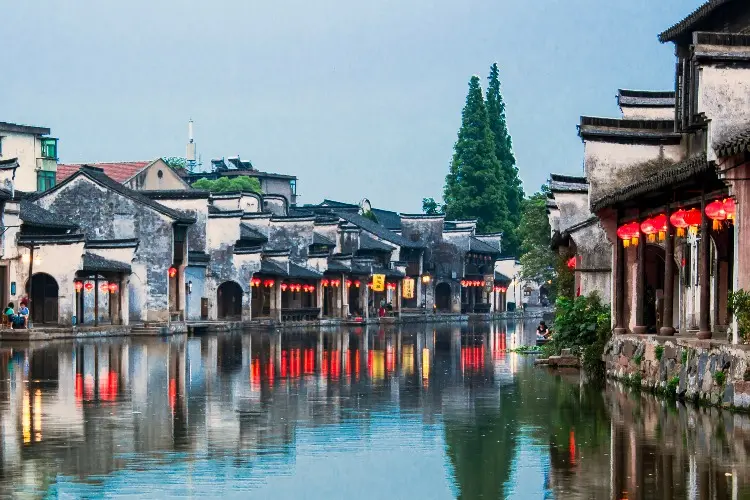
Nanxun Ancient Town.
Local Cuisine and Accommodation Nearby
Nestled in the serene landscapes of Nanxun Ancient Town, you’ll find a delightful fusion of local cuisine and accommodations that cater to every traveler’s needs. As you wander through the charming cobblestone streets, take a moment to indulge in the flavors of this historic town.
Local Cuisine
-
Shuijiao (水饺) – These delightful dumplings are a must-try when visiting Nanxun. Often filled with finely minced pork, vegetables, and aromatic herbs, Shuijiao are typically served with a tangy dipping sauce. The texture of the handmade wrappers paired with the savory filling offers a taste of local tradition.
-
Nanxun Sliced Noodles (南浔刀削面) – Made fresh daily, these hand-sliced noodles are a staple in the region. Served in a rich broth with seasonal vegetables and tender meat, they provide a hearty meal perfect for any time of day. This dish embodies the comforting essence of Chinese home cooking.
-
Sweet Osmanthus Rice Cake (桂花糕) – A true delight for dessert lovers, this traditional snack is made from glutinous rice flour and sweet osmanthus flowers. Its delicate sweetness and chewy texture make it a popular choice among locals and visitors alike, and it’s often enjoyed with a cup of tea.
-
Stir-Fried River Shrimp (清炒河虾) – Sourced from the nearby waters, these shrimp are lightly stir-fried with garlic and scallions, allowing their natural sweetness to shine through. This dish is not only a local favorite but also a wonderful way to experience the fresh flavors of Nanxun’s waterways.
Accommodation Options
Luxury:
- Liu’s Garden Hotel – This elegant hotel is located right by the river, offering stunning views and luxurious amenities. With beautifully designed rooms that blend traditional Chinese aesthetics with modern comforts, guests can unwind in style after a day of exploration. The on-site restaurant serves exquisite local dishes, making it a perfect base for your culinary adventures.
Boutique:
- The Nanxun Lodge – A charming boutique hotel that provides a cozy atmosphere and personalized service. Each room is uniquely decorated, reflecting the rich culture and history of Nanxun. The lodge features a beautiful courtyard where guests can relax with a cup of tea and enjoy the peaceful surroundings. A complimentary breakfast with local specialties is included with your stay.
Budget:
- Nanxun Youth Hostel – Ideal for budget-conscious travelers, this hostel offers clean and comfortable accommodations at an affordable price. Located within walking distance of the main attractions, it provides a friendly atmosphere where you can meet fellow travelers. Shared kitchen facilities are available, allowing you to prepare your own meals and enjoy the local ingredients.
Whether you’re savoring the local dishes or resting in one of the town’s charming accommodations, Nanxun Ancient Town offers an enriching experience that will linger long after your visit.
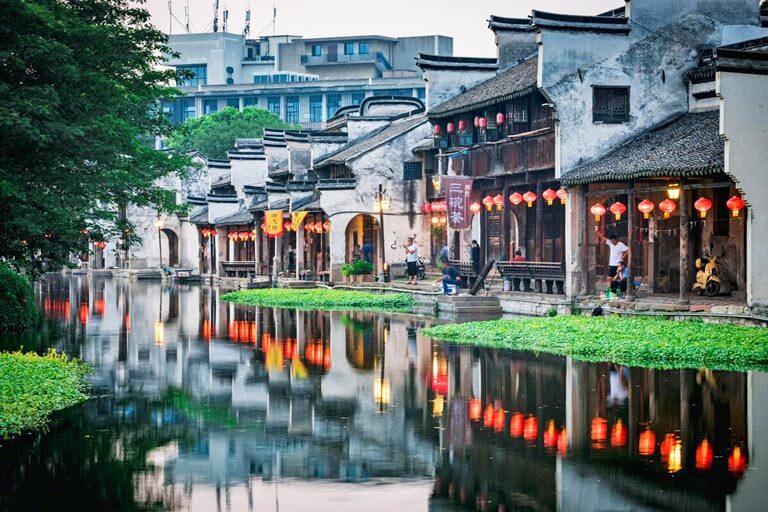
Nanxun Ancient Town.
Frequently Asked Questions
Frequently Asked Questions About Nanxun Ancient Town
1. Is Nanxun Ancient Town suitable for children and the elderly?
Absolutely! Nanxun is a charming and tranquil destination that welcomes visitors of all ages. The town’s flat terrain makes it easy for elderly travelers and families with children to navigate. There are plenty of picturesque spots for children to explore and enjoy, as well as shaded areas for elderly visitors to rest.
2. Are there English signs in Nanxun Ancient Town?
While many signs in Nanxun are predominantly in Chinese, several key tourist areas and attractions feature English translations. Additionally, staff at tourist information centers and some local businesses often speak basic English, making it easier for international travelers to get around.
3. How much time should I plan for a visit to Nanxun Ancient Town?
A visit to Nanxun generally requires 1 to 2 days, depending on how deeply you wish to explore its attractions. If you plan to enjoy leisurely walks, boat rides, and cultural experiences, allocating a full day or more will allow you to soak in the town’s charm without feeling rushed.
4. What is the best time to visit Nanxun?
The ideal time to visit Nanxun is during spring (April to June) and fall (September to November) when the weather is mild and pleasant. Summer can be quite hot and humid, while winter may bring cooler temperatures. Visiting during these prime seasons also allows you to experience local festivals and events.
5. How do I get to Nanxun Ancient Town from Hangzhou or Shanghai?
Nanxun is conveniently located about 1.5 hours from Hangzhou and 2 hours from Shanghai by car or train. Regular buses also connect these cities to Nanxun. Once in the town, walking is the best way to explore its narrow lanes and waterways.
6. Are there any entrance fees or costs associated with visiting Nanxun?
Yes, there is an admission fee of approximately 100 yuan per person to enter the main historical areas of Nanxun. This fee supports the preservation of the town and its cultural heritage. Various attractions within the town may have additional fees, so be sure to check before you visit.
7. What types of activities can I enjoy in Nanxun?
Visitors can indulge in a variety of activities, including exploring ancient architecture, enjoying scenic boat rides, taking part in traditional crafts like Chinese brush-making or block printing, and savoring local cuisine at charming eateries. Photography enthusiasts will find endless opportunities to capture the town’s picturesque landscapes.
8. Is Nanxun Ancient Town crowded?
Compared to other famous water towns like Zhouzhuang and Wuzhen, Nanxun tends to be less crowded, allowing for a more authentic and peaceful experience. However, weekends and public holidays can attract more visitors, so consider visiting during weekdays for a quieter atmosphere.
Final Thoughts on Your Trip
As your journey through Nanxun Ancient Town comes to a close, take a moment to reflect on the serene beauty and rich history that envelop this enchanting water town. From the tranquil canals lined with ancient bridges to the charming streets echoing with the whispers of the past, every corner of Nanxun invites you to slow down and savor the moment.
The unique blend of traditional Chinese architecture and subtle Western influences offers a visual feast, while the opportunity to engage with local culture—whether by trying your hand at making a Chinese writing brush or indulging in delicious local delicacies—creates lasting memories.
Nanxun’s authentic charm lies in its tranquility, allowing you to escape the bustling crowds found in more commercialized towns. So, as you leave, carry a piece of Nanxun with you in your heart. Let it remind you that the most profound experiences often come from the quietest corners of the world. Embrace the spirit of discovery and continue seeking the hidden gems that await on your travels.